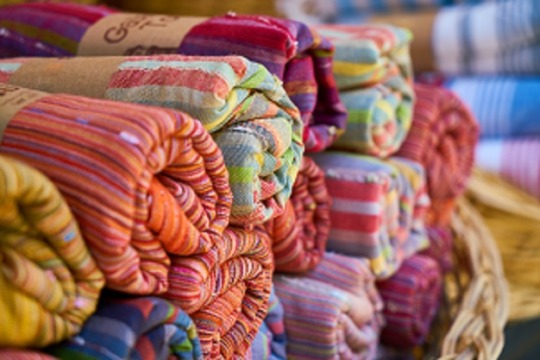Khadi- The Heritage Textile of India
by Vikram Sharma Textile designerKhadi is a priceless asset to our country. It is not only a fabric that defines Indian culture, but it is also an embodiment of our freedom struggle. Khadi rose to prominence during the Swadeshi movement as a defiant weapon against the unjust British government, which was hell-bent on crippling the country's economy.

The Birth of Khadi
The name khadi was derived from the word khaddar, which means hand-spun cloth.
The archaeological evidence on the Indus Valley Civilisation shows that its inhabitants were actively involved in handwoven textiles. The idols in many Harappan sculptures were dressed in hand spun robes.
So it's safe to say that we Indians inherited the art of spinning cloth by hand. "In India, there were trees growing wild, which produce a kind of wool better than sheep's wool in beauty and quality," a Greek historian wrote as early as 400 BC. The Indians make their clothes from this tree wool.
When Alexander invaded India, his soldiers began wearing cotton clothing after seeing Indian women spinning cotton fabric extracted from cotton ginning. Even the Mauryan scriptures mention yarn made from wool, bark fibres, cotton, hemp, and flax and how artisans made a living from it.
While travelling around the world, Alexander popularised handmade Indian cloth. Hand-woven Indian muslin cloth was in high demand during the mediaeval era and beyond. During this time, the hand-made chintz pattern created by Indian artisans became extremely popular.
Blow to Khadi Production
As the khadi textile gained popularity around the world, Europeans, particularly the British, saw it as a serious threat to their own textiles. In an astute attempt to dampen the popularity and demand for khadi, and also handloom products like handloom lungi they established numerous mills throughout the world, including a large number in India. Khadi production in India fell dramatically after the introduction of machine-made textiles. As a result, millions of weavers lost their jobs.
Revival of Khadi and its involvement in the Freedom Struggle
During India's freedom movement, Mahatma Gandhi revived and restored this nearly obsolete skill of spinning khadi to its former glory. He urged Indians to boycott British goods in favour of all things Indian—the Swadeshi movement. This strongly motivated Khadi artisans to reintroduce this heritage textile into circulation. People from all walks of life joined forces to promote the Khadi garment.
The Swadeshi and Non-Cooperation movements paved the way for the formation of the All India Spinners Association, which aimed to promote, produce, and spread Khadi. This provided employment to lakhs of Indians and aided in their economic stability and self-sufficiency.
Following independence, the All India Khadi and Village Industries Board was established, which culminated in the establishment of the Khadi, Village and Industries Commission (KVIC). Today, it is in charge of the planning, promotion, organisation, and execution of programmes for the development of khadi and other village industries in rural areas, as well as the coordination of other rural development agencies as needed.
Khadi is the Fashion World
Khadi has gained traction since then. In fact, khadi garments like khadi cotton vests had become a fashion statement by the early 1990s. At the time, the KVIC organised an all-Khadi fashion show in Bombay, which was a huge success. Ritu Beri, a designer-entrepreneur, debuted her first khadi collection at the prestigious Tree of Life show held at Delhi's craft museum in 1990, causing quite a stir in the fashion world.
This modern classic garment has a devoted following among today's millennials. This comfortable fabric is apt for both summers and winters and is quite the rage on today's runway shows, retaining the traditional quotient while remaining modern.
Khadi was revived and became a fashion obsession. Khadi has evolved from a basic garment to high-end fashion fabric, and it is now a popular choice in salwar suits, jackets, bridal lehengas, suits, and dresses. The Khadi has become a global icon today that resonates with India's rich culture and heritage, piqueing the interest of today's top designers.
Sponsor Ads
Created on Jul 5th 2022 02:32. Viewed 218 times.



